

CHRISTIAN LEADER

Inside: MBMSI Witness
Dare to date again I love to tell the story When memory is lost





Forging connections that build community— whether fueled by discussions on Facebook or exchanges in the church hallway—do not come easy.... “ “

Connie Faber Editor
Connection, research has shown, is our most basic need. It is crucial to our well being that we connect with one another, with our own hearts and minds and with the God who created this desire for intimate connection. The ways in which we connect with each other have changed enormously in recent years. The growth of the World Wide Web, the development of mobile devices and the rise of social networking sites have transformed the way we live, work and communicate.
New media have also impacted the church, including the USMB. In late 2010 the U.S. Conference hired Justin Salters as the denomination’s first social media coordinator. In this issue you can read Justin’s thoughts on how social media sites like Facebook, Twitter and YouTube can benefit our family of churches (pages 19-20).
And so USMBs march into the second decade of the 21st century armed with new and old methods of relating with one another. But forging connections that build community—whether fueled by discussions on Facebook or exchanges in the church hallway—do not come easy for a family of churches like ours.
USMBs are diverse. How do we create a sense of belonging among more than 31,000 people who speak as many as six languages and are part of almost 200 congregations spread across 20 states? Redesigning this magazine, creating an interactive Web site and opening Facebook and Twitter accounts are three recent changes that USMB leaders have made to our communications efforts in hopes of building stronger connections.
Diversity means we won’t always agree. How do we cultivate connections when disagreements are only natural? How can we disagree about things that are important to us— who is speaking at the National Youth Convention, how we provide theological training or the words we use to talk about Christ’s atoning sacrifice—and still demonstrate respect for one another? USMB leaders have initiated informal and formal occasions to discuss the places where we disagree. But issues are often complicated and resolution takes time. New technology does not eliminate poor communication habits or hurtful words. It does not increase our tolerance for the opinion of others or make us more gracious when our views are challenged. Whether we are posting on Facebook, writing an e-mail or talking face-to-face, our words have great power (James 3:1-12). I wish James had a solution to the “deadly poison” of words that curse rather than bless, but he doesn’t. What he does offer is encouragement—to recognize the problem and to not give up trying to control our words. And so the challenge is to spend our words in ways that better connect us to one another and strengthen any link, no matter how tenuous, between us and another person.



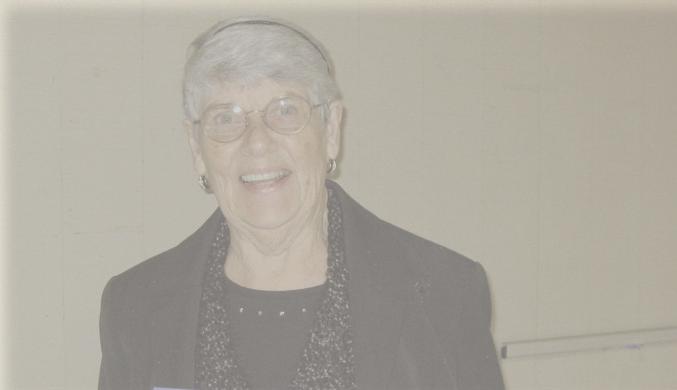











No adjustment
Confessions of faith or creeds do not reflect what we live but what we believe the Scriptures teach. The early church believed that Jesus and the apostles taught peacemaking, nonviolence and noninvolvement in the military. Every AnabaptistMennonite-Mennonite Brethren Confession of Faith since the Schleitheim Confession in 1527 has confessed and taught peacemaking and noninvolvement in the military.
To be an Anabaptist and a Mennonite Brethren is to confess that Jesus and the New Testament teach love of enemies and nonviolence. The fact that members of the church do not always live up to the Confession is a sad commentary on our unfaithfulness to our understanding of Scripture, but that does not invalidate the legitimacy of our Confession. We are in continual need to talk about how to be faithful to our Confession. We do not need to talk about how to adjust our Confession of Faith to our unfaithfulness in living the Confession in life.
John E. Toews academic dean and professor of New Testament Emeritus of MB Biblical Seminary, chair of the General Conference Board of Faith and Life Task Force on Confession of Faith Revision, 1987-93; member of the Task Force, 1993-95
Guiding the future
The article “Living what we say we believe” (Conference Call by Ed Boschman, Dec/Jan) was a thought provoking essay, and I wish to share some of my thoughts.
First, a short autobiography: I am a senior citizen (76) retired (10 years) and a have been a Christian since
my 37th year. I rose through the ranks of the Congregation Church, the Presbyterian Church, the Lutheran Church and now the Mennonite Brethren Church. My education was science, and God was conformed to that worldview until I knelt at the altar at Hume Lake Christian Camp and had to throw out a whole belief structure in favor of believing what I could not see but knew to be true. That is my witness statement. I am a Christian believer because I believe it is true.
That said I have to ask myself why it is that I do not always live in conformity to what I believe. I gain some small amount of psychological comfort in noting that I share this flaw with the Apostle Paul (Rom. 7:14 to end). So with that information and confession I have a few thoughts about the referenced essay.
The survey is reported to record the responses of up to 124 individuals. It would help to know what percentage of our membership that represents. I feel certain I will know soon after this is published, if it is published.
The survey seems to indicate a need to restructure some of the articles of the Confession of Faith. Why would we do that? Do we think that changing the article will bring us more closely in line with God’s will for the MB church? Why not leave the Confession as it is and pray that we conform to it?
Who would propose a revision of the Ten Commandments? Why is a change in the U.S. Constitution so difficult and opposed by so many? I think it is because these documents are not meant to be memorials to the past but rather are guides to a better future. Let’s leave them unchanged and strive to move toward them, not away from them.
Robert F. Lewis, Reedley Calif.
CHRISTIAN LEADER
February / March 2011 Volume 74 • Number 1
Connie Faber EDITOR
Myra Holmes ASSISTANT EDITOR
Shelley Plett GRAPHIC DESIGNER
Vance Frick COVER PHOTO
Rebecca Faber, Jake Wiebe, Jarod Hamm MODELS
The Christian Leader (ISSN 0009-5149) is a gathering place for the people, passions and mission of U.S Mennonite Brethren. The Christian Leader is published bimonthly by the U.S. Conference of Mennonite Brethren Churches. However, the opinions expressed here are not necessarily those of the church as a whole.
COPYRIGHT The articles printed in the Christian Leader are owned by the CL or by the author and may not be reprinted without permission. Unless noted, Scripture quotations are from the New International Version.
READER PARTICIPATION Letters to the editor should be 300 words or less and on one subject. Letters must be signed and include the writer’s city and state. Letters will be edited for clarity, appropriateness and length. Letters will be published, as space allows, unless marked, “Not for publication.” Readers interested in contributing essays for In My Humble Opinion and First Person should contact the editor. Freelance article submissions are welcome; a SASE must accompany articles.
SUBSCRIPTIONS $10 for six issues and $20 for 12 issues ($15, $30 in Canada; all other countries $25 for six issues); $1.50 per copy
CORRESPONDENCE: All correspondence, including subscription questions and address updates, should be addressed to Christian Leader Box 155, 107 N. Main, Hillsboro, KS 67063-0155 Phone: 620.947.5543
E-mail: christianleader@usmb.org
MEMBERSHIP The Christian Leader is a member of the Evangelical Press Association and Meetinghouse, an association of Mennonite and Brethren in Christ editors.
POSTMASTER Send address changes to Christian Leader, Box 155, Hillsboro, KS 67063. Periodicals postage paid at Hillsboro, Kansas.
The Christian Leader is published by

U.S. Conference of MB Churches

Ed Boschman USMB Executive Director ebed@usmb.org
Weapons and loose statistics
National Association of Evangelicals
A couple of months ago I was privileged to attend the annual National Association of Evangelicals (NAE) Board of Directors meeting, this time held in Los Angeles. This is an arena in which I represent what many there would consider “a little peace church.” Nobody actually says that, but it’s reasonably clear that it is a common take. This is the kind of gathering where I get to watch many of the long timers greet and hug each other while I look for a seat that has not yet been saved.
We were well hosted at the Foursquare Church headquarters, and the meeting was actually quite enjoyable. Besides the personal privilege of a couple of good chats with colleagues from across the nation, we all were afforded the extraordinary privilege of hearing former U.S. Secretary of Defense William Perry brief us on the current situation regarding our global “nuclear tipping point” realities. It was both captivating and unnerving.
This brilliant senior fellow at the Hoover Institution, who is presently an advisor to the President, culminated his remarks by saying, “I will spend the rest of my life working toward the elimination of nuclear weapons. Because I helped to design and build most of them, I know best how to do that.” It occurred to me that this might be a good time for a standing ovation, but the little peace church guy was not willing to risk embarrassing his national family or more accurately himself.
My second thought was, “That’s astounding.” My prayer was and is, “May God help him.” In late November, I posted on Facebook that it is my prayer that diplomacy will win the
day in Korea. It caught a little affirmation, but in my humble opinion not nearly enough. Seems to me praying for peace is a no-brainer, right? And so is celebrating someone working toward turning swords into plowshares.
National realities about Evangelicals
I’m guilty of it for sure: grabbing a statistic from an assumed trustworthy source and putting it to use for my own purposes. As long as we can cite Barna or Pew Forum or Zogby, we get the benefit of the doubt. Facts are good for building a case or making a point, whether written or spoken. Quoting the right facts might get some folks to take a preferred action or at least to get momentarily alarmed about something.
A few years ago, I heard Leith Anderson, current NAE president, challenge some stats and thereby dismantle some commonly held opinions. That was refreshing and also put in place a new grid for me: “Not so fast and loose with the data already OK?” Bradley Wright’s book, Christians are Hatefilled Hypocrites…and Other Lies You’ve Been Told, is making the same point.
While it is not the kind of book everyone would love, love, love to read, it is a book worth browsing through and having on your shelf. Does it interest you to know whether it really is true that society respects Evangelicals less in recent years? Or whether Christians really do divorce as often as nonbelievers? Or whether church attendance among young people really is in a death spiral? Get the book. Then you can quote Dr. Wright.
Seems to me praying for peace is a no-brainer, right? And so is celebrating someone working towards turning swords into plowshares.
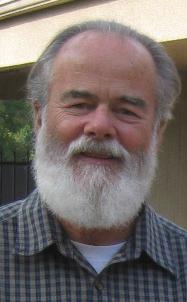
Give blood and give life
For the past two years I have coordinated blood drives at College Community Church MB in Clovis, Calif. It has been a rewarding experience for me and for our congregation.
Donating blood is one of the most tangible ways in which a person can contribute a much-needed and scarce resource to the community. When we give blood we have literally given of ourselves in a special way. For the sick and injured that receive the blood, it often makes a lifesaving difference.
Most healthy adults can donate a pint of blood every eight weeks. Ironically, the source of blood is plentiful, but most people don’t give. I can’t help but see a parallel in Jesus’ statement in Luke 10:2, “The harvest is plentiful, but the laborers are few.”
The two most commonly given reasons for not giving are “I’m scared of needles” and “I never thought of it.” Having churches and other organizations sponsor blood drives is a way of overcoming the second reason. And perhaps seeing your fellow church member be brave is a way of overcoming the first.

Early in our experience, I reported in a church business meeting that our participation was less than hoped for by the blood bank. Delores Friesen, who is a MB Biblical Seminary professor, stood up and told how a transfusion of four units of blood saved her life when she was near death from a postpartum hemorrhage. Since then, participation
has been very good. Being aware of the life you may be saving puts fear of needles in a different light.
Perhaps our most inspirational donor is Naomi Dyck, an 85-year-old widow. She is a retired nurse with the universal donor blood type (O negative), and she knows from a health-care provider’s viewpoint how important blood transfusion can be. She has donated for years and was enthusiastic about having the bloodmobile come to her at church instead of her having to go to the blood bank.
As every Sunday school boy can tell you, the “widow’s mite” does not really seem to be worth as much as a rich man’s thousands. Jesus was encouraging his disciples to think about how much the gift is worth to the giver. But in the case of blood donation, everybody’s pint is worth the same, whether rich or poor. I would encourage readers to consider starting a regular blood drive at your church or to donate regularly at Red Cross drives. Or try other ideas, like blood donation and ice cream socials at the local blood bank. Giving blood is giving life without losing it!
Roger Fast is a retired surgeon who with his wife, Joan, and their four children spent three years working in the hospital in Kajiji, Congo (Zaire) in the 1980s with Mennonite Brethren missions.
COLLEGE COMMUNITY CHURCH
Naomi Dyck

New name brings clarity, highlights mission

After nearly 110 years, most under the somewhat unwieldy moniker Mennonite Brethren Mission and Service International, MBMSI is changing its name to MB Mission
Following a process of consultation with partner organizations, pastors, supporters and missionaries, various boards approved the new name and fresh visuals.
“Many individuals have simplified it (MBMSI) to MB Mission already,” says Larry Neufeld, lead team, mobilization and media. “It’s a natural step.”
The organization began rolling out the new name through a letter to pastors, a press release and a full-page announcement in the Winter 2011 issue of Witness, MBMSI’s quarterly magazine inserted in the MB Herald and Christian Leader. By the end of the first quarter, all the organization’s branding and correspondence will reflect the new name and the new tagline, “Going to the least reached.”
The “family” made it clear that “clarity and simplicity is the road to go down,” says Neufeld. “The brand becomes an expression of who we are as an organization.”
In a letter to pastors, general director Randy Friesen writes, “We are rooted in the faith of leaders who have gone before us.”
“Our history will help propel us into the future,” says Neufeld. “Mission is about moving forward, a sense of invitation.”
The slate gray color in the logo expresses the “grounding” of the past while the deep orange graphic evokes a sense of vibrant energy—pointing to “where God is moving, doors he’s opening, being obedient to him,” says Neufeld.
“It (name change) will have minimal impact on the way we go about our work, but it will certainly take less explaining both to Thai nationals and other missionaries we come across,” says Andy Owen, a long-term missionary in Thailand. “At the same time, it still maintains the distinctiveness we bring as Mennonite Brethren to our Kingdom ministry around the world.”
Constituents affirmed showing the tie to the Mennonite Brethren church in the name and identified mission on the frontiers as a characteristic of the organization. MBMSI currently has 85 missionaries around the world, 18 in restricted access countries.—Karla Braun, MB Herald


Pastors invited to national orientation
Pastoral staff members and spouses who are new to the U.S. Mennonite Brethren family are invited to a National Pastors’ Orientation, scheduled for March 7-9 in San Diego, Calif.
The purpose of the event is twofold:The first goal is to introduce new pastoral staff to the beliefs, mission and structures of the denomination.
Representatives from various national, district and global MB ministries will be present to talk about their missions. Just as important, NPO will give attendees opportunity to network and build relationships with denominational leaders and with each other. One highlight of the event will be a dinner cruise on the San Diego Bay.
“In other words, we’ll meet some leaders, do some orientation and learn some stuff,” says Ed Boschman, U.S. Conference executive director.
“Oh, and San Diego in March is not hard to take.”
Accommodations will be at Island Palms Hotel and Marina and include such free amenities as shuttle service, parking, Internet, fitness center and bike rentals. Registration is $175 per person. Registration deadline is Feb. 14. Visit www.usmb.org for information. —USC
San Antonio 2011 coverage will include social media
What could be more fitting than for a Mennonite Brethren event focusing on the next generation to make use of the next generation in communication tools? Coverage of the next National Youth Convention, San Antonio 2011, will include both online reports and various social media connections, including Facebook, Twitter and YouTube
Live updates, photos and video links from the event will be available on Facebook at http://www.facebook.com/sanantonio2011. Video content and reactions from SA2011 will be posted on YouTube: http://www.youtube.com/sanantonio2011video.
Live microbloggingwill be posted on Twitter at @sanantonio2011. According to Justin Salters, social media coordinator for the U.S. Conference, SA2011 participants will be able to Tweet their reactions to the conference and be part of the ongoing conversation by including the hashtag #SA2011.
The Christian Leader will also be posting online reports from the convention at www.usmb.org/christian-leader. Look for print coverage in the June/July issue of the CL. SA2011 will be held April 16-19 in San Antonio, Texas. —USC
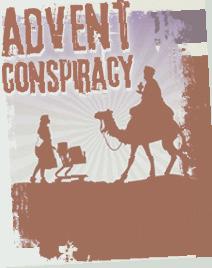
byTheNumbers

SHOPPERS
anticipated spending an average of $658 for 2010 Christmas gifts, up 58% from 2009 planned spending.
Source: American Research Groups, Inc.


More than 1,000 churches in 17 countries raised $3 million in 2009 for relief efforts around the world through Advent Conspiracy.
Source: Advent Conspiracy

At least 28 USMB congregations participated in Advent Conspiracy 2010 collecting at least $228,560 in offerings. MB Foundation, the USMB stewardship ministry, spearheaded this effort in recognition of the 150th anniversary of the MB Church. A full report is posted at usmb.org/christian-leader.
5 minutes with...
Dennis Janzen
This fall Dr. Dennis Janzen coached the Fresno Pacific University women’s volleyball team to its fourth consecutive National Association of Intercollegiate Athletics championship title. It was his team’s sixth NAIA title and adds to many records made and broken in Janzen’s 27 years coaching at FPU.
How do you get a team to perform at this level?
A successful coach recognizes the value and dignity of each student athlete. They are not just pieces on a chessboard.
What key ideas do you drill into them?
Two basic rules: Don’t let your teammates down, and make the people around you better.
Does your doctorate in sports psychology make you a better coach?
Without experience the Ph.D. is just theories and ideas. But academics give context and help me better verbalize what I know from 35 years of experience.
How does a team handle the pressure of maintaining that winning record?
It can take the joy right out of who we want to be. It’s a delicate thing, but the kids have focused on the right things—just being the best team and the best teammates we can possibly be.
Where do your players come from?
Success has made us a very attractive team. We get a couple thousand inquiries a year, but our focus is to recruit state and locally. We also have international players—this year from China, Brazil and Slovakia. They bring a richness of experience to their teammates that goes beyond the game. I wouldn’t have a team without one or two.
What coaching tips do you have for the church?
Great teams must be sacrificially on the same page. If the team falters it’s because selfishness manifests itself—particularly in defining moments.

Interview by Kathy Heinrichs Wiest
Auto dealership to be converted
Ethiopian Evangelical Church, Atlanta, GA, is celebrating God’s answer to many years of prayer. This congregation of over 600 has outgrown their current facility and for several years has been actively looking for new property. The congregation is affiliated with the U.S. Conference and has worked with MB Foundation to acquire the building, a former automobile dealership on a 20-acre site. MBF will be working with the church to sell their current facility after they move into their new home.—MBF

YOUNG ADULTS SERVE WITH MCC
Two Mennonite Brethren young women served recently with Mennonite Central Committee, the peace, relief and service agency of North American Anabaptists. Amy Villarreal participated last summer in MCC U.S.’ Summer Service Worker (SSW) program, working with her home church, Grulla (Texas) MB Church. LynAnne Wiest of Kingsburg, Calif., is among 60 new workers commissioned in August for one year assignments through MCC’s Serving and Learning Together. Wiest is serving in Cambodia as a handicraft and marketing designer. Wiest has a bachelor’s degree from Tabor College, Hillsboro, Kan.—MCC
Global History project releases Latin America volume

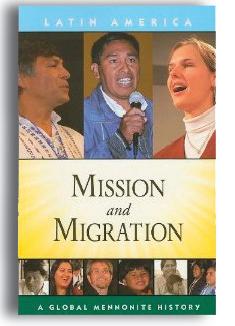
The third volume in the Global Mennonite History series is now available. Mission and Migration, by Jaime Prieto Valladores of the Costa Rican Mennonite Church, documents the history story of Mennonites and Brethren in Christ in Latin America from 1911 to the present. Mission and Migration is published in the U.S. by Good Books. Order through www. amazon.com or 800-762-7171, Ext. 221. —MWC
Nursing program earns accreditation








Historical Commission appoints Dyck


The Historical Commission, a binational agency of the United States and Canadian MB conferences, has appointed Andrew Dyck as executive secretary, effective Jan. 1, 2011. In this quarter-time role, Dyck replaces Abe Dueck, who served as interim executive secretary following the resignation of Ken Reddig in April 2009. —CCMBC



Fresno Pacific University’s RN-BSN degree completion program has received national accreditation from the Commission on Collegiate Nursing Education (CCNE). The accreditation is for five years, the maximum available. FPU created a bachelor’s degree completion program to give registered nurses the skills they need to advance in their careers and better serve their profession and community. FPU is the MB-owned university on the West Coast and headquartered in Fresno, Calif.—FPU


by JEREMIAH BETRON




Why dating your spouse will foster commitment and intimacy
My first semester of seminary I visited the bookstore many times for books—that I didn’t need and have never read. I went book crazy so I could talk to Amanda, one of the employees. I had my eye on her and asked her out for coffee. She agreed with one of the brightest smiles I have ever seen. Little did I know that the coffee date would eventually lead to a wedding date.
Amanda and I went on a lot of dates during our courtship and, ashamedly, have had fewer dates since our honeymoon, and I know we are not alone in this. Marriages today have a dating deficiency that leaves couples longing for passion, intimacy and commitment. My challenge for you is to begin dating your spouse again!
Dating grows your marriage when you spend time together with a goal in mind. Before marriage the goal of dating was determining if this person was someone you could spend the rest of your life with. Dating after marriage cultivates that earlier commitment and fosters deeper intimacy. Song of Solomon 2:1-17 provides some reasons why this happens and even gives us some insight into the character of God.
Building commitment
When we date our spouse, our commitment to one another will be strengthened. Solomon offers five suggestions for bolstering commitment in marriage.
1. Express praise and adoration for one another. “I am the rose of Sharon, the lily of the valleys,” says the bride (v.1). In ancient times the rose of Sharon was the flower of fertility and beauty, while the lily stood for loveliness. The bride feels beautiful and lovely because her groom adores her. “Like a lily among thorns, so is my darling among the maidens,” says the groom. There is no other woman for him.
In the same way, our spouses need to know that we are attracted to them. Tell your spouse regularly that you adore her or respect him.
2. Increase a sense of security in your relationship. The bride responds to the groom in verse three: “Like an apple tree among the trees of the forest, so is my beloved... In his shade I took great delight ...”
In ancient Near Eastern love poetry, the apple tree often symbolizes the male. Finding an apple tree full of fruit among a forest of pines would be a surprise. The bride affirms her groom’s uniqueness, but also that she feels protected by him as she finds “shade” under his tree.
The feeling of financial, emotional, relational and spiritual security is important in every marriage. Does your spouse feel secure?
3. Reestablish commitment to each other. The couple affirms their commitment in verse four: “He has brought me to his banquet hall, and his banner over me is love.” Banquets were an important event. Sometimes the servants brought the guests from their homes to the banquet hall. Here, the groom brings his bride to his banquet hall, assuming a servant role. This shows his commitment, as does the mention of the banner, a sign of belonging and inclusion.
Commitment is about feeling like you belong with someone. Does your wife feel like she belongs to you by how you serve her or speak to her? Does your husband feel like he belongs to you by how you serve him or include him in your plans?
4. Look only to each other for refreshment and affection. The earlier reference to the groom as an apple tree that provides refreshment is repeated in verse five. “Sustain me with raisin cakes, refresh me with apples, because I am lovesick,” says the bride. Now her lovesickness is so severe she can literally feel it, and she asks her beloved to revive her. In verse six the groom cures her with an affectionate embrace: “Let his left hand be under my head and his right hand embrace me.”
Your words and actions can refresh your spouse. The affection you show your spouse can revive a starving marriage.
5. Outside of marriage, practice sexual restraint. Are you in a relationship, but not yet married? Notice verse
seven. The bride sings: “I adjure you…that you do not arouse or awaken love until it pleases.” The arousal of love refers to sexual intimacy. The bride strongly urges the maidens to avoid sexual intimacy until they are married. She makes an oath with them. Those who are not married are to promise that they will not force love, but patiently wait for God to bring it into their lives.
Enhancing Intimacy
While commitment is necessary for every marriage, intimacy also plays a vital role. When we date our spouse, intimacy grows. The next verses suggest four reasons why this happens.
Dating enhances intimacy as you find a growing excitement for one another. In verse eight and nine we see that both the bride and her groom are eager to be married. Verse nine says of the groom, “Behold, he is standing behind our wall, he is looking through the windows....” Does your spouse know you are excited to see her when the workday is over? How many times have you told your husband you are glad to see him?
Intimacy grows as you cultivate your relationship. The groom invites his bride to go for a springtime walk (vv. 10-13). The long winter of their separation has passed. Just as spring is the time to cultivate the ground for planting, it is also time for this couple to prune their relationship for growth and intimacy.
When you and I cultivate our marriages, we prepare them for growth and intimacy. Those icy feelings begin to melt away as we prune old ways in preparation for new growth.
Intimacy deepens because we have the opportunity to be vulnerable. The groom calls to the bride in verse 14, “O my dove, in the clefts of the rock, in the secret place of the steep pathway, let me see your form, let me hear your voice....” The bride has kept secrets from her husband, but he gently coaxes her out of her
insecurity. He desires to know her more fully. Deeper intimacy requires deeper vulnerability.
To further deepen intimacy, settle issues in your marriage. The bride says in verse 15, “Catch the foxes for us, the little foxes that are ruining the vineyards....” The bride wants her groom to catch the destructive “foxes” in their relationship—the fox of mistrust and jealousy; the fox of selfishness and pride; the fox of an unforgiving spirit. The best of marriages comes across destructive problems. Don’t let something that can easily be solved drive a wedge between you and your spouse.
Intimacy deepens because you find reassurance in your relationship. Despite the “foxes,” the bride is reassured about their relationship. “My beloved is mine, and I am his…” (vv. 1617). She finds comfort knowing that even though they have problems, the groom belongs only to her, and she belongs only to him. Their relationship is strong and enduring. When your marriage goes through troubling times, you need to know that your spouse is going to be there “until death do us part.”
The Song of Solomon offers some great reasons to date your spouse. Don’t kiss dating goodbye, but do kiss the dating deficiency in your marriage goodbye. Accept this challenge to reaffirm your commitment and deepen your intimacy with that one person who will walk the entirety of life with you.
Now if you’ll excuse me, I have a coffee date with my wife.
Jeremiah Betron earned his Master of Theology degree from Dallas Theological Seminary in Dallas, Texas, and has served the Bethel MB Church, Yale, SD, as lead pastor for almost two years. Prior to coming to Bethel, he served as the assistant pastor of Men’s Ministry at Irving (Texas) Bible Church. He and his wife, Amanda, have been married for three years, and while they don’t have children, they do have a Cocker Spaniel named Lucy.
Insights to God...

Maybe you’re not married. Does the Song of Solomon still apply to you? While it is primarily about marriage, it does give us insight into the character of God. Here are four truths about the depth and majesty of God.
God enjoys beauty and affirms it. As the bride and groom affirm one another’s beauty, we see something of God’s heart. He enjoys what is beautiful, and this involves more than just physical appearance. True beauty is anything that is pure. A thing lacks beauty when it is impure: an extramarital relationship, a tarnished sense of self-respect, damaging words toward someone. God affirms beauty.
God designed marriage for the expression of human sexuality. God makes marriage alone for sexual intimacy. Any form of sexuality expressed outside of marriage is an affront on God and goes against God’s design for sex.

Because God made sex for marriage, it is reserved for a man and woman bound by marriage.
God’s love fulfills specific needs for love. You and I are emotional beings who crave love. We need to feel loved and to be loved. Human love will never completely satisfy this craving. We must first turn to God, seeking to be fulfilled by his love. When loving God is our priority, we will be able to more fully love others.
God is divinely pursuing you. Just as the bride and groom pursued one another, God pursues you for a deeper relationship. He wants to be loved by you. He wants you to be open with him and to declare your commitment to him. God does not push you away from him, but seeks to be part of your life. He doesn’t have to pursue us, but by grace He does.—JB




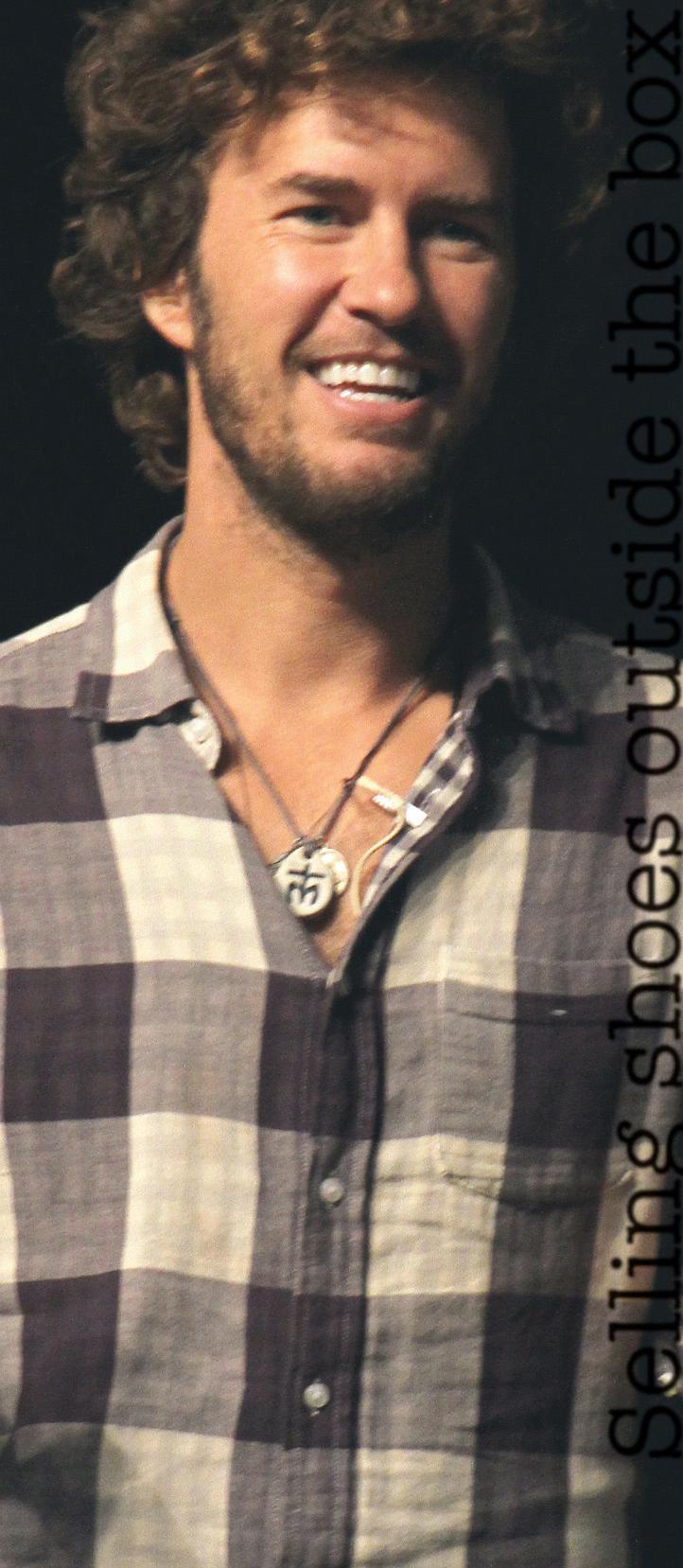
Selling shoes outside the box





village child. In three months, he figured, the duffle bags would be empty, and he would return to Argentina to spend his profits on the children’s next sets of shoes. He called the venture “Shoes for Tomorrow” (later shortened to TOMS) and the TOMS Shoes model of “One for One” was born—a for-profit business that invited consumers to participate in giving to a person in need.
Mycoskie’s vision for this new venture was small. He would have this little shoe business on the side, he figured, while continuing work with his partners on the driver’s education enterprise. But his efforts to find outlets for his 250 shoes hit pay dirt when a Los Angeles Times fashion writer happened on his display in a shoe boutique.
Her newspaper story of a shoe company where each buyer gave a pair of shoes to a child in need captured people’s imagination. TOMS’ Web site was bombarded with orders for 2,200 pairs of shoes. Mycoskie flew back to Argentina to set up a supply line to meet the exploding demand. Meanwhile, two business interns worked from the kitchen table in his Venice, Calif., apartment contacting customers to say that delivery would take several weeks.
Five months into his TOMS shoes venture, Mycoskie took his interns, his parents and other family and friends—a team of 16 shoe-givers—on their first shoe drop. He needed the whole team because instead of bringing back 250 pairs of shoes, they were distributing shoes to 10,000 Argentinean children.
Mycoskie looks back at how his views of business have changed: “When I was younger I used to think that as a businessperson my responsibility and job
was to make as much money as I could… and then maybe when I was…ready to retire I would get to be in giving and philanthropy and helping others.” To his surprise he found that “you can actually do both at the same time!”
Mycoskie says his parents were key in his drive to give and serve. “My parents are both amazing, compassionate people,” he reflects. “While we didn’t really engage in a lot of volunteer trips or things like this, they were always very compassionate with the people in our local community and how they could serve. I really think that’s where I got it from.”
He also finds a mandate for lifelong giving in Proverbs 3:9-10: “Honor the Lord with your wealth and with the firstfruits of all your produce; then your barns will be filled with plenty.”
“To see Scripture come to life through a business is really amazing,” says Mycoskie. “We were giving shoes away even when we were losing money those first couple of years, but we kept on doing that, and I think we’ve been extremely blessed that we remained faithful.”
Mycoskie says his sense of calling came at that first TOMS shoe drop in Argentina. The team had made their deliveries and was packing up to leave a village when a mother of three boys came to him with tears in her eyes. Through a translator she explained that up till that moment her sons had been sharing one pair of shoes. Since shoes were required at school, her boys would rotate, each attending school for a day and then staying home two days while the others got their turns. Now they could all attend every day.
“When I started TOMS I knew kids needed shoes, but I had no idea it could change someone’s life this much,” he remembers. “After that conversation I said, ‘That’s it, I have been called to get as many shoes on kids’ feet as I can in the world.’”
After four years in business, TOMS Shoes has made a good start on that mission. In September the business celebrated the millionth pair of shoes given to children around the world. But to Mycoskie, that is just a step along the way. “It’s sort of a milestone that someone can write about,” he says, “but it was kind of anticlimactic for me because there is still a lot of work to do.”
In Mycoskie’s mind, the work is twofold: First he wants to alleviate suffering by providing shoes and helping with treatment of various foot diseases. Secondly, he wants to see others follow his lead and break out of the status quo of business. “We want to use our story to inspire other business leaders to create the next TOMS,” he says. “There is a lot of room for business to incorporate more giving and not depend on donations and the nonprofits.”
Speaking to students and business groups around the country, his business plan is outside-the-box, his style is unconventional and his message is focused: “Incorporate giving in your life—the earlier the better. It blesses you in ways you can’t imagine.”
Kathy Heinrichs Wiest is a freelance writer living in Kingsburg, Calif. Fresno Pacific University is the Mennonite Brethren university headquartered in Fresno, Calif.



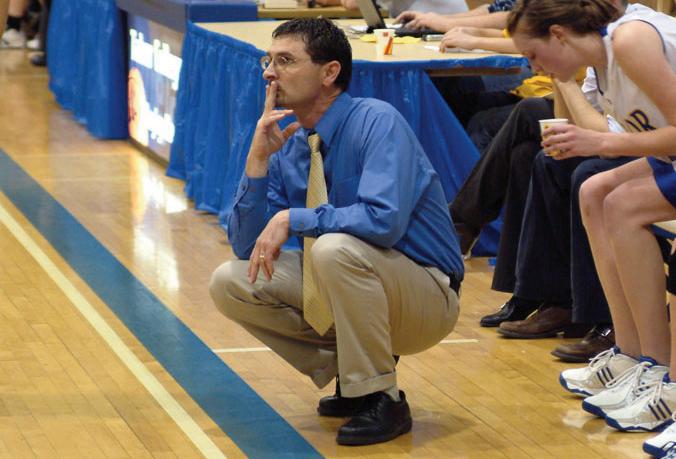
W INNING
Can competition enhance ministry?
We live in a sports-crazed culture. Children grow up dreaming of being star athletes, while parents sacrifice time and money supporting those dreams. Thousands of fans spend inordinate amounts of time, energy and money following their favorite teams.
This kind of culture creates a mindset about sports that essentially says winning is the only thing that matters. For coaches and athletes, striving to win takes on an intensity that is hard to describe. In a word, winning for most athletes and coaches is a passion.
Now passion is a marvelous quality. When I read Scripture, I am struck by the passion of God. As human beings, we are created in
God’s image. It should therefore come as no surprise that people have passions. I find myself being passionate about a number of things, one of them being competition. The opportunity to win at something simply creates in me a kind of enthusiasm and anticipation that never grows dull.
To be sure, passion has the potential to bring out both the best and the worst in people, and certainly passion for competition falls into this category. I think it is obvious that God would have us embrace the passions he has created within us as a platform for godly influence. I have discovered that winning is essentially a byproduct of excellence, and that excellence enhances ministry. I trusted Christ at age 24, and from that point forward I have worked to take my
by RUSTY ALLEN
passion for excellence and winning and to use it for God’s glory. Think with me a little deeper about this.
Expanding our influence
In I Chronicles 4:10, Jabez prays that God will enlarge his territory, and God answers his prayer. Much has been made of this little prayer we find tucked away in a section of the Bible devoted to family lineage. Bruce Wilkinson, in his book The Prayer of Jabez, contends this is a prayer God is eager to answer for every follower of Christ.
The apostle Paul addresses various Christian groups in the New Testament with a consistent message about the importance of joining God in his work on earth to see people everywhere come to know and grow in Christ. In
Rusty Allen (above) coached the Tabor College Lady Jay’s basketball team for six seasons, leaving coaching in 2007 to spend more time with his family.

“I think it is obvious that God would have us embrace the passions he has created within us as a platform for godly influence. I have discovered that winning is essentially a byproduct of excellence, and that excellence enhances ministry.
“Colossians 3:23, Paul instructs people in the church at Colosse to work at everything with all their heart. In I Corinthians 9:24-25, we read instructions to the Corinthian believers that they are to run the race of life marked out for them in such a way as to win an eternal reward.
Do you see the connection? When individuals, organizations, schools and/or teams do things well, people pay attention. God gives us talents, gifts and passions and asks us to execute them to the best of our abilities because excellence enhances ministry.
In the world of competition, this reality can potentially establish a platform for an ever-expanding sphere of positive influence. I say potential because in our culture, the world of competition can also establish an ever-expanding sphere of negative influence.
What kind of influence?
As I mentioned earlier, people in our sports-crazed culture are obsessed with following a winning team. Further, when an athlete or team is successful, our culture sees fit to endorse a measure of arrogance and boasting. For evidence of this contention, watch a few sporting events on television with your antennas out for signs of arrogance. Similarly, when an athlete or team is unsuccessful, our culture endorses a measure of immaturity and pouting. Again, just watch a few televised sporting events looking for these behaviors.
The truth is, I have wrestled often with how my passion for competition, particularly winning, should be used in keeping with Paul’s instruction to do everything as if doing it unto God. Romans 12:1 urges us to offer our physical bodies in sacrifice as an act of worship. How do I play or coach a contest as
an act of worship? Another way to ask the question is: How do I play or coach a contest in an effort to build a platform for having a Christ-centered influence?
Let me propose that the answer to this question is to win and lose differently than what seems acceptable or right in the eyes of our culture. I made reference to Paul’s urging in Romans 12 that we should offer ourselves as a living sacrifice. Paul directs us in verse two of that chapter not to conform to the patterns of the world. In the world of competitive athletics, this would seem to say win and lose differently. Rather than responding arrogantly to a win and immaturely to a loss, an appropriate response to winning and losing for the Christian athlete or coach is to use either platform as an opportunity for having a positive influence.
Winners and losers



class and grace instead of immaturity. In competitive athletics, losers have a great opportunity to influence the people around them with their actions.
At the end of the day, an athletic contest almost always produces a winner and a loser on the scoreboard. This reality forces those of us who have a passion for competition to wrestle with what is most important about what we do. The challenge for Christian athletes and coaches is not to somehow value excellence and winning any less, but to channel the pursuit of these goals toward an end that is sacrificial and ultimately an act of worship—to win and lose differently, if you will. This kind of mindset creates an environment where excellence will enhance ministry.


Winners are popular and people want to talk about them and to them. So imagine athletes and coaches speaking with people after a win with an attitude of humility and encouragement rather than conceit. In competitive athletics, winners have a great opportunity to influence the people around them with their words.




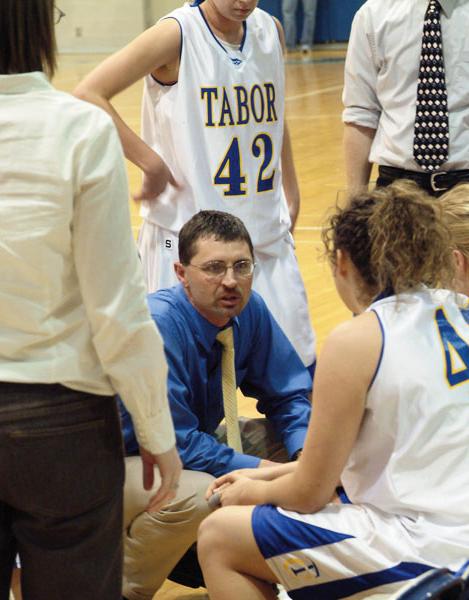


Competitive athletics then is an avenue for Christians to have an expanding sphere of influence.
Teams or individual athletes who lose tend to experience emotional depression, and it is natural for people generally to avoid talking with them after a loss. However, those who have lost an athletic contest are still watched closely. Imagine athletes and coaches welcoming the opportunity to have their actions scrutinized after a loss but demonstrating
Rusty Allen is vice president for athletics at Tabor College, the Mennonite Brethren college headquartered in Hillsboro, Kan. Allen coached the Tabor College women’s basketball team for six seasons and left coaching in 2007 to spend more time with his family. Under his leadership the Lady Jays won two conference championships and made three consecutive runs at a national title. Allen, who was 82-26 in conference play and 128-59 overall, was named the Kansas Collegiate Athletic Conference Coach of the Year in 2004-05 and 2005-06. He and his family attend Parkview MB Church, Hillsboro, Kan.


Grace and truth
Utah churches seek to transform unique culture
It’s a mission field with statistics that rival many of those of countries in the 10/40 Window, a band of countries between 10 and 40 degrees north latitude that is home to most of the unreached people groups in the world. Only 1 percent of the population in this mission field attends an evangelical church—about the same percentage as Thailand or Morocco.
But this mission field is within the borders of the United States. It’s Utah—“the last great mission field in the United States,” according to Paul Robie, who pastors one of five MB churches in Utah.
Utah’s Salt Lake Valley is not only a beautiful vacation destination surrounded by majestic mountains. It’s also home to the headquarters for the Church of Jesus Christ of Latter Day Saints (LDS). The influence of LDS is so dominant in the culture and politics of the area that Robie says, “We don’t have a
theocracy in Utah, but it is close.”
While the surface verbiage of LDS and evangelical Christianity is similar, at their core LDS and the Bible simply don’t agree. Cory Anderson, pastor of Shadow Mountain Community Church, West Jordan, Utah, compares the people of Utah to “sheep without a shepherd” and calls them “sincere but enslaved.”
Anderson says, “It deeply disturbs me that God’s name, while used by those who are Mormons, is not being hallowed in the state of Utah as it should be (Matt. 6:9). When someone distorts, twists or misrepresents God, then his name is not being revered, honored and kept holy. I hope and pray this will change.”
Just as Mennonite Brethren work to bring the gospel to unreached peoples overseas, so we are working to bring grace and truth to Utah. In 1998, Robie and his family moved to Draper, Utah,
with a vision to plant an MB church in a city that, at the time, had not one Christian church. With the support of the Pacific District Conference, Mission USA, the U.S. Conference church planting and renewal ministry, and Laurelglen Bible Church, Bakersfield, Calif., South Mountain Community Church (SMCC) grew and multiplied.
The Utah MB family of churches now includes SMCC in Draper; a daughter church, Shadow Mountain Community Church in West Jordan; two satellite campuses, Daybreak in South Jordan and The Springs in St. George; and a brand-new church plant, New Hope Church in West Valley.
In e-mail interviews, the pastors of these churches talk passionately about the need for church planting in Utah. Anderson says, “Since church planting is the most effective means of evangelism, it

New Hope Church pastor Josh Gonzales, pictured here baptizing a new believer, dreams of a day when “masses of people” in the Salt Lake Valley “give their hearts over to Christ and live for his glory.”
only makes sense to plant a church in such an unreached area.”
However, not every church plant is effective in Utah. In fact, says Robie, some do more harm that good. “We need to be very strategic in the way we go about this or we will end up giving the LDS propaganda machine more to work with,” he says. “They love to tell their people how weird and ungodly those evangelicals are and how people often go astray after attending there. We have to be as healthy and life-giving as any church in America if we are going to dispel the lies.”
Each of the Utah MB churches has its own personality, befitting their unique communities. At the same time, they share some of the same challenges of preaching Christ in a LDS-dominated culture. So a common thread of grace and truth runs through everything they do.
Shame, not grace, often characterizes LDS. Rod Jost, campus pastor for Daybreak@SMCC, says that the very concept of salvation by grace is foreign to most
LDS adherents, as is the idea of discipleship flowing out of relationship rather than an effort to exalt oneself.
Robie says that because the LDS teaches a works-based righteousness, “it is unacceptable to have problems as a result of sin.” He describes the culture as “fake” or even “plastic.” Robie says, “Everybody here is ‘doing great’ and the kids ‘couldn’t be better.’”
Authenticity and acceptance offer refuge for those who can’t live up. Pastor Josh Gonzales calls New Hope a “safe zone” where people can come as they are. As he says on the New Hope Web site, “We believe that people should enjoy their relationship with God and their community, which is why we want people to be themselves and feel comfortable wearing what they want, looking the way they want and speaking their opinions without fear.”
Truth is as critical as grace. Robie says, “We operate as if everyone coming in our front doors has been lied to and now has a ‘trust issue.’” On a very basic level, that means the church must never overpromise and must follow through on what they do promise.
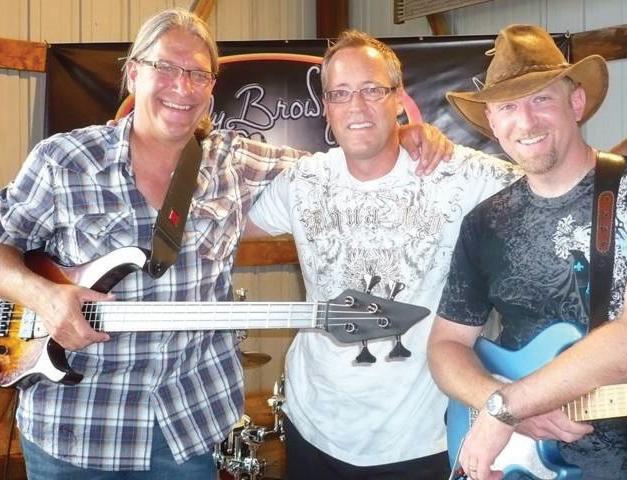
And it means they preach biblical truth, neither watering it down nor attacking LDS beliefs. “We do not attack the Mormon Church with a frontal assault,” Cory Anderson says. “Our approach has been to preach Christ and him crucified (1 Cor. 2:1-5) and trust that the mes-
sage of the gospel will change lives because it is the power of God (Rom. 1:16).”
The Utah pastors say their connection to the U.S. MB family is critical as they seek to transform their culture. “We appreciate all the help we have received to this point,” Robie says, “and we look forward to planting more campuses and churches soon.”
They ask for continued support, first and foremost through prayer, but also through finances and encouragement—phone calls, e-mails and texts. While these things might seem small, the pastors say they do make a difference to the Utah churches.
Their work is far from done. The SMCC Web site outlines their vision for up to 16,000 worshipers under the SMCC umbrella by the year 2020, including 6,000 people attending the Draper church, five daughter churches of 1,000 people each and 10 satellite campuses with 500 each.
Even that will be only a dent. Gonzales points out that almost 2 million people live just in the Salt Lake Valley, so the goal of 16,000 is still less than 1 percent of the population. “Imagine what our churches would look like if we reached only 1 more percent of our population for Jesus. Imagine what 4,000 to 5,000 newly converted Christians would look like in each of our churches,” he says. “It would be the book of Acts happening right in the heart of our country.”
He adds, “Every pastor in Utah dreams about the day when masses of people give their hearts over to Christ and live for his glory.”—Myra Holmes
Daybreak@SMCC pastor Rod Jost, left, and worship leader Andy Browning, right, together with drummer Paul Ewell, center, perform as the Andy Browning Band at backyard concerts intended to encourage people to belong before they believe, a key philosophy in the Salt Lake Valley church planting strategy.
Connecting the family
Salters taps into social media to build USMB
Over a century ago, Mennonite Brethren immigrants to North America established a German-language periodical, the Zionsbote, to better connect with each other. U.S. Mennonite Brethren still want to connect and today social media is the latest way to communicate. In order to make the most of this tool, the U.S. Conference has hired Justin Salters as its first-ever social media coordinator.
Salters, who began working part-time from the USC’s West Coast office Oct. 12, holds an associate degree in political science from Bakersfield College, Bakersfield, Calif., and is currently working on a bachelor’s degree in political science at California State University, Bakersfield, with a minor in economics. He attends The Bridge Bible Church, an MB congregation in Bakersfield, where he serves the congregation’s young adult ministry as worship leader.
Salters brings skills in communication and strategy, experience with pioneering communication efforts for a nonprofit organization and, of course, knowledge of current social media platforms. CL assistant editor Myra Holmes talked recently with Salters about his vision for better connecting the USMB family via social media. Here are excerpts from that conversation.
CL: You call yourself a “social media addict.” What do you mean by that?
JS: I mean the iPhone is my weapon of choice, and I don’t know what I’d do without access to my Facebook and Twitter. (Laughs.) I am on Twitter, Facebook, LinkedIn, Flicker, YouTube—pretty much if you name it, I’m on it.
CL: Have you always been drawn to social media?
JS: I love communication and connecting with people, and I’ve always been somewhat interested in technology. So as social media platforms have developed for the purposes of connecting with people, I’ve been happy to get on the bandwagon.
CL: Just what is social media?
JS: Media just refers to communication. Traditionally, communication from an organization to its consumers or subscribers is oneway. What social media does is add the social aspect, which is everything you think about when interacting in a relationship. So it adds the relationships to media.
The beauty of social media is that if I post content on a blog or on Facebook or on a Tweet, someone can reply to it. Then if

someone else sees that, they can reply to both of those. So you get this whole collaboration. Everybody gets to participate.
CL: Why is it important that USMB include social media in our communication strategy?
JS: We have to pursue social media unless we want to see the USMB come to an end within this century.
CL: That’s a strong statement!
JS: We are on the edge of a paradigm shift in the way that we communicate and relate with other people. Two hundred years ago, we didn’t have telephones; we had communication that was based on telegraphs and written correspondence. Now because of decreasing costs of technology, we’re able to communicate more quickly, and we’re able to communicate more information. It’s a different way of approaching
JUSTIN SALTERS
communication that may be unfamiliar to people, but there’s nothing intrinsically bad about it.
Social media is changing the way we communicate. We cannot bury our heads in the sand and think that if we don’t adapt we will be able to be relevant or effective with the way our culture’s progressing.
CL: What role do you hope social media will have in the USMB family one year from now?
JS: In another year, I hope to see more of our churches using social media. The churches are really where we’re going to be able to inter-
act with people and really accomplish our mission. It’s not necessarily the U.S. Conference staff; we’re not the ones who are out in the community. It’s the churches who are really going to be able to do a lot. So I would love to see 50 percent of our churches using social media consistently. And of course I would love to help them get there, because that’s what I’m passionate about. I just want to see us connect. If we can connect with social media, that will be amazing to me.
CL: What about 10 years from now?
JS: I’m not even going to talk about 10 years from now, because who knows what social media will look like. I would just hope that we would be able to stay current with trends in communication.
CL: So how can an individual or church begin connecting with USMB via social media?
JS: The first entry point would be to go to www.facebook.com/usmbchurches and begin connecting with us there. I would hope that people would go ahead and participate. That’s what’s going to make this great and make this work.
“I love to tell the story”
Transformation ripples through Oklahoma woman’s
life
Sometimes transformation makes a big splash, dramatic and sudden; sometimes it’s a ripple from small acts of obedience. Sometimes, transformation looks like a grey-haired Comanche woman from Oklahoma. Meet Jean Radney, 80, of Memorial Road MB Church, Edmond, Okla., an ordinary woman whose life is marked by such ripples.
It takes very little prompting to convince Radney to tell how her life has been transformed. “I love to tell the story of Jesus,” she says.
Her story of Jesus’ work in her life, like many, begins with family. Radney was born into a Comanche family and raised by her grandmother, as is common in that heritage. She describes her Comanche family as one in which love flows freely and giving comes naturally.
“The Lord provided all that for me, without me even realizing how good and gracious he’s been to me,” she says.
Radney’s family was first invited to church services by Magdalena Becker, a Mennonite Brethren missionary to Comanches who also served as a U.S. government field matron, visiting Comanche homes and teaching women certain homemaking and health skills.
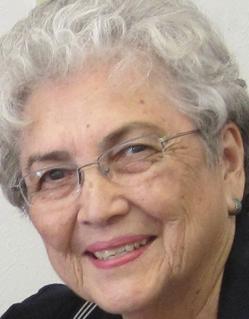
As a result of that simple invitation, Radney’s grandmother faithful-
ly took the family to church at Post Oak MB Church, Indiahoma, Okla., originally established as an MB mission outpost to Comanches. That’s where she heard about Jesus, gave her life to him at age 11 and was baptized. And that, Radney says, has made all the difference.
“It’s a humbling experience to live the life that I have and to be loved and blessed by so many people,” she says, “and it’s because of Jesus. Why else would that be?”
She has been part of the Mennonite Brethren family for most
JEAN RADNEY
of her years since, from the Post Oak MB Church, to the now-closed West Oaks MB Church, to her current church home at Memorial Road. As a young woman she even attended Corn Bible Academy, a school founded by Mennonite Brethren in Corn, Okla.
When she considers how this dual heritage has shaped her, Radney says, “I am so rich, because I have been given so much love.” Because she feels so richly blessed, she wants to pass the blessing along. As she does, the ripples of transformation continue to touch her life and the lives of others.
She has long served by teaching a women’s Sunday school class at Memorial Road—a role she didn’t seek out, but accepted when asked in a spirit of obedience: “Whatever I can do to serve the Lord,” Radney says.
She calls it a humbling experience, because God uses her even though she doesn’t feel qualified and because the women often look up to her as a role model.
“I don’t want anyone to be like me,” she says. “I want them to be like the Lord. Hopefully other people see Jesus in me. That’s what I want for my life: to glorify him.”
Radney counts the opportunity to teach among her blessings. “The leader is the one who really benefits,” she says. Studying for each lesson throughout the week keeps her in God’s Word and strengthens her relationship with Jesus.
In addition, she has a long-standing practice of personal time in Bible study and prayer— although, she admits, not every morning: “I don’t want to sound like goody-two-shoes.”
That time in the Bible has helped her learn to listen to and obey the promptings of the Holy Spirit. She says that as she reads and studies, often a verse and the name of a person will come to mind.
“When I feel like the Holy Spirit is telling me to call someone, I’ll call and tell them, ‘I just want you to know that the Lord laid you on my heart and I’m praying for you.’”
Those words of encouragement are often received with “that’s just what I needed,” which she counts as evidence that God is using her small acts of obedience.
Radney traces the ripple of prayer in her life back to her mother, a Christian who fre-
quently prayed in Comanche. “That’s where I learned to pray,” she says.
Now she prays regularly for those around her—the women in her Sunday school class, the church secretary, her doctor, the stranger who held the door for her, an unbelieving family member.
“I feel like this is a gift that the Lord has given me—to pray for people,” she says. “It’s been a blessing to me and hopefully to the ones I’m praying for.”
An invitation to church, a prayer, a word of encouragement—they’re not splashy, but Radney says that even such small things can be a testimony. “These things to me are how I serve the Lord,” she says. “I do it in obedience to the Holy Spirit.”—Myra Holmes







Central District celebrates 100 years of ministry
Delegates inspired by stories, hear reports
The Central District Conference (CDC) story— both past and present—was recounted by various people in multiple formats during the district’s centennial celebration held Nov. 11-14, 2010, and hosted by Community Bible Church, Mountain Lake, Minn., just 10 miles from the site of the district’s very first convention.
Seven congregations were invited to share a historical sketch of their church and ministries. These stories of MB churches in Harvey, ND; Huron, Bridgewater and Rapid City, SD; Lustre, Mont.; Mountain Lake, Minn., and Henderson, Neb., as well as of the ministry in Porcupine, SD, were interspersed throughout the business sessions.
The Saturday evening program featured an historical telling of the CDC told in a reader’s theater format with PowerPoint illustrations. Peggy Goertzen, director of the Tabor College Center for MB Studies in Hillsboro, Kan., offered personal observations, underlining the district’s passion for unity in spite of distance and culture, for preaching the gospel “no matter what it takes” and for reaching the marginalized.
Not only did the convention cel-
ebrate the past, it also spotlighted what God is doing now among the Mennonite Brethren living in Montana, Minnesota, Nebraska, Iowa and North and South Dakota. Ministry reports were given by each of the district’s committees— Executive Board, District Ministries Council, Church Planting and Renewal Committee, Faith and Life Committee, Nominating Committee, Trustees and Youth Committee—as well as District Minister Roger Engbrecht.
The Friday evening Church Planting and Renewal banquet highlighted Living Water Church and Stony Brook Church, both in the greater Omaha, Neb., area, as well as Christ Community Church in Sioux Falls, SD. Saturday afternoon presentations by representatives from Ethiopian Christian Fellowship of Sioux Falls, SD, Russian Evangelical Church in Shakopee, Minn., and the two Hispanic congregations from greater Omaha, emphasized the district’s commitment to planting churches and ministry among various ethnic groups. Stories from these churches illustrated the words
of Stony Brook pastor Chad Stoner:
“To be a church planting denomination is a process that isn’t satisfied without discipling people.”
Delegates also heard reports from partner agencies including the U.S. Conference, Tabor College and the college’s Carson Center for Mission, Service and Global Education. Delegates elected members to district committees and approved a budget of $252,000, up from $237,400 the previous year.
Convention speaker Lynn Jost, MB Biblical Seminary dean and Fresno Pacific University vice president, gave three sermons from the Psalms. Jost was baptized at Salem MB Church of Bridgewater, SD, by his father who was pastor of the congregation in the 1960s. Jost and Tabor College president Jules Glanzer, who is also a product of the CDC, provided Friday afternoon seminars on preaching and faith in the next generation, respectively.


As it has since 2005, the district began its annual convention with a Thursday evening Celebrate Missions program by MBMS International. Jon Pritchard, Midwest regional mobilizer, moderated the evening that featured a media evangelist to North Africa and the Middle East.

Connie Faber
Vince Carrig, right, gives a prayer of blessing for the three CDC church planting pastors: Rod Anderson of Sioux Falls, SD, Chad Stoner of Millard, Neb., and Jose Guerra of Omaha.
CHRISTIAN LEADER


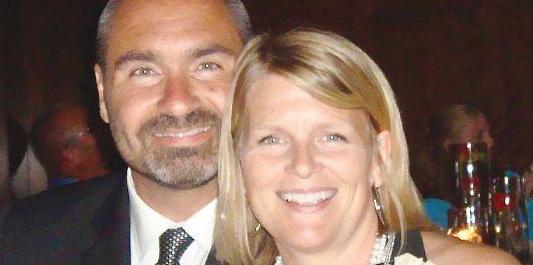










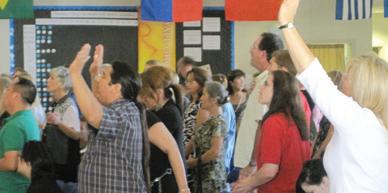










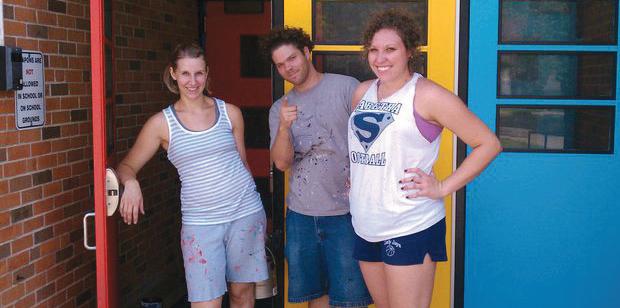













































Don Morris Mission USA director
Start at ground level
Ihad just had a brief conversation with the person sitting next to me on a recent flight. We hadn’t talked about much of anything of significance, but we did eventually come to the point where I shared that part of my job involved planting new churches. After that, the passenger hid himself in his book.
A moment later, the pilot came on the intercom and said we were preparing for landing. I wondered how many times I have heard that same message over the past six years of my work with Mission USA and the travel it involves. So I kind of heard him, and at the same time I kind of didn’t hear him.
What caught my full attention on this occasion was the huge burden that began to settle on my heart as I looked out the window and observed the city where we were arriving. I also thought of the person sitting next to me that didn’t have any desire to continue a conversation when he found out I worked for Jesus. And as I looked out the plane’s window, I thought about all the hundreds, no thousands, of homes I was seeing as we descended.
“There are likely thousands of people with no real interest in God who live in those homes. And, there will be thousands in the next city I fly into, and the next and the next,” I remember thinking. I had to keep my head
There are approximately 38,000 Christian denominations in the world. This takes into account various branches and cultural distinctions of denominations with churches in more than one country.
Source: About.com: Christianity


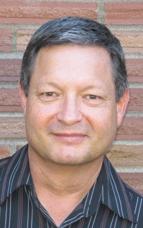
turned toward the window so the man next to me wouldn’t see the tears forming in my eyes.
I wondered as I prayed, “Lord, how can we Mennonite Brethren make any significant difference in this world? How can we even create a drop in the bucket in light of the magnitude of the spiritual void I’m imagining from 10,000 feet?”
What I believe God then said back to me was: “You can’t do it all, just do your part. And, remember this is my plan (to reach the lost) not yours.”
The world looks really big from the window of an airplane. But once on the ground, it doesn’t seem so huge. From the ground you can see individual people and neighborhoods. The world then becomes very real and personal. It’s in these neighborhoods that we can make a difference—and we are! As we develop a stronger and stronger vision for reaching those who don’t yet know Jesus, and as we strive to create relationships that matter, the result has been and will continue to be transformed lives.
So, what’s the moral of this story? The task of reaching people looks impossible when viewed from 10,000 feet. But when I’m next to someone, it’s not daunting at all. So do what I did that day on the plane: start with the person beside you.


Did YOU know?
One American denomination recently found that 80% of its converts came to Christ in churches less than two years old


When asked “Is drinking alcohol okay for Christians?”

Hence the claim of Peter Wagner and many other leaders: “The single most effective evangelistic methodology under heaven is planting new churches.”
Source: Dave Early; Thatpastorguy.com
• 67% of Christians across America answered yes, in moderation,
• 16% said not at all,
• 14% said yes, without qualification, and
• 3% were unsure.
Source: ChristianForums.com
Mission MB Church is mission minded
Mission (Texas) MB Church, located just a few miles north of the Rio Grande, continues to look for ways to present the gospel. Arturo Williams Velez, a member of the Mission congregation, recently began a ministry in the 7Mile Line neighborhood that holds promise. Meeting under a red and white open-air tent, the ministry focuses on meeting the people of the surrounding area. When a worship service begins and the amplifier is turned on, nearby neighbors can’t help but notice.
This past Thanksgiving a group of students from Rio Grande Bible Institute, together with Mission MB’s youth group, held a carnival for kids of the area and worship services for people of the neighborhood. During this outreach event, two teenage girls and a family of three made decisions to be Jesus-followers. This outdoor ministry could struggle during the colder winter months, so organizers request prayer that momentum will not be lost.
Don Morris, Mission USA director, has been involved with leadership training sessions for pastors and leaders from the Latin America MB (LAMB) District Conference, including Rafael Nunez, the Mission MB Church pastor who is still learning English. “We like the new partnerships forming with U.S. Conference,” says Nunez.

Grace Bible Church from Gettysburg, SD, is also a ministry partner with the church, sending volunteers from time to time to assist Mission MB in their outreach efforts and possible future expansion.—Mission USA
Eidse takes on new role
Six years ago, Rebecca Eidse couldn’t shake the feeling that she and her husband, Chris, were supposed to move their young family from Winnipeg, Man., to North Carolina for long-term ministry. Having never been to North Carolina, Rebecca wondered if she was hearing God correctly.
But as the calling intensified for both Rebecca and Chris, they determined to get to North Carolina however they could. In just a short time God paved the way, providing avenues for them to journey south and to connect with the North Carolina District MB Conference as the district’s youth director.
Fast-forward six years. Following a very fruitful ministry as the district’s youth director and also as the part-time associate pastor at Bushtown MB Church, the Eidse family began feeling that restlessness once again. After a positive assessment as potential church planters under the guidance of Mission USA, God led Chris and Rebecca to consider becoming the lead pastoral couple at Boone MB Church. Located near the bustling Appalachian State University neighborhood, this multiethnic church was a magnet for the searching couple. “It fits us perfectly,” says Chris.
Mission USA, the church planting and renewal ministry of U.S. Mennonite

Brethren, has entered into a partnership with Boone MB Church to subsidize staff costs and assistance with new outreach initiatives.
“Chris is all about reaching people for Jesus,” says Terry Hunt, long-time NC district leader and pastor of The Life Center in Lenoir, NC. “With Chris at the helm in Boone, all kinds of great things are possible,” Hunt says. — Mission USA
Events for children are among the activities Mission MB Church has initiated in the 7-Mile community.
MISSION MB CHURCH
NCDC
Charles Buller
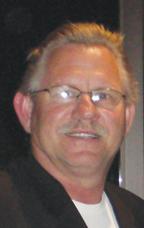

When memory is lost
If you are at least 50 years old, you know what it is like to try to remember a small detail, recall someone’s name or search for a misplaced cell phone. You might even poke fun at yourself and call it a “senior moment.” What is not funny is that dementia and memory-related diseases like Alzheimer’s are increasing at a rapid rate in our culture.
The debate about whether we simply diagnose these problems better than we used to does not dilute the fact that 2.5 to 5 million Americans struggle with Alzheimer-related symptoms. Memory-related illnesses will only increase as the Baby Boomer generation ages—there are simply more of them. Alzheimer’s, for example, typically strikes after the age of 60.
In my role at Palm Village Retirement Community I have a good deal of contact with families who are attempting to cope with and respond to memory-related illnesses. I conducted an unofficial poll and asked them to offer their advice to church and family members who will face similar uncertainties.
Love unconditionally; it is “their” disease you are sharing.
Don’t be afraid to repeat questions and conversations.
Allow people to become someone different than you’ve known. Don’t assign moral judgments to changes in personality. Some memory-related illnesses lead to a complete personality change.
Enjoy moments and times of clarity and thinking when they occur.
Anticipate some “pushback.” This is an uncertain time for all involved.
Refuse to isolate yourself as a caregiver. Join a support group if you need help. There
are many available.
Start early to make plans for transitions. Involve children and siblings in the process. Don’t just push it off on the closest sibling, be that emotional or geographical. This requires a “village.”
Recognize that savings are for spending when it comes to senior health care. This is not the time to begin an estate plan that shifts assets for the heirs but puts at risk the quality of care for the sick.
If someone you love shows signs of dementia, it is never too early to seek professional counsel, be that legal, medical, spiritual or in retirement living.
If you are 50-years plus and enjoy good health, begin now to do estate planning, will preparation and settle the question of long-term health care—or not—before it becomes necessary.
Accept the new normal. Our society as a whole will be in an aging process that will not reverse itself for another 30 years. Churches should plan and staff accordingly.
If you are a young person with an interest in health care, consider a calling into some form of geriatric health care.
Aging is one of life’s certainties. None of us is entirely who we used to be and will certainly be effected by the aging process regardless of our health. Memory capacity actually begins to decrease in our 30s.
While loss of mental dexterity does not diminish in the same way for everyone and can be guarded with simple mental exercises (Search “keep your memory sharp” at Mayoclinic.com) the fact is, aging will change us all. As a “youth culture” gets older, how will we adapt? Denial is a favorite habit of most humans. In aging it is an enemy, not an ally.
Charles Buller is vice president of advancement for Palm Village Retirement Community in Reedley, Calif.

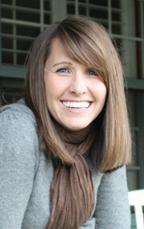
Amy Walker
Blogging through Lent
Iam not a big fan of the Internet. I know, I know…call me crazy. There are wonderful advantages to being so connected: e-mailing to keep in touch, Skyping with my mom who happens to be 872 miles away and immediate information that comes in handy with a curious five-year-old—who knew pandas eat 84 pounds of bamboo each day. But I struggle with being a die-hard fan of something that keeps us so plugged in, so occupied, so connected—but not really. All. The. Time.
So I was skeptical, perhaps even aversive, when the idea came to me that our women’s small group should have a community blog (a shared online journal) during the 2010 season of Lent. How could a blog allow us to connect in deeper ways and lead us into a more meaningful experience of Lent? Was it even possible?
Yet, here was my hope: That the blog would create a space for our women’s small group to journey through Lent together. A space to share what God was stirring in our hearts during the Lenten season: ordinary and extraordinary, simple and profound, beautiful and frustrating. Above all else, that it would point us toward the path of “knowing nothing except Jesus Christ…and him crucified” (1 Cor. 2:2).
And you know what? It did.
One of the things I love about blogs is the full spectrum of creativity. With blogs you can share photos, songs, paintings as well as words. I hoped we could be more creative in the way we experienced Christ during Lent and could share with one another those things that had stirred our hearts.
We posted pictures: flowers blooming amidst a cover of snow, eggs perfectly arranged in a nest and

Contemplating the Cross
nails on a cross. We posted lyrics to songs: How Deep the Father’s Love for Us, There Is a Fountain, Nothing but the Blood. More than that, we posted our lives and stories. Some wrote about being deeply moved by Christ’s sacrifice. Others wrote about feeling nothing but apathy and disconnect. Some shared the struggle to enter into Lent while wiping runny noses, changing diapers, fixing snacks and then turning around to fix dinner. Others shared of being broken by sin revealed in their lives as we delved deeper into the story of the cross.
More than anything, we shared our collective desire to know God more. To believe we are so passionately and individually loved by our Father that he sent his Son to die. And that we want desperately to live and love out of that truth and only that truth.
The last post was a picture of a beautiful painting that held these words: He’s alive! As Lent came to an end, we entered into a new season, Easter. And we all celebrated Easter together—singing, a little bit of dancing, a lot of hugging, laughing and rejoicing. The celebration was richer from knowing each other in deeper ways than when we started this journey.
And I suppose, through this experience, that I have modified my stance on the Internet a tiny bit. While there may be plenty of crazy, pseudo-connections happening all over the World Wide Web, there are real, Christ-centered connections happening too. And I am grateful I could be a part of it.
Amy Walker leads a women’s small group at Trailhead Church, a Mennonite Brethren church plant in Centennial, Colo. For readers interested in observing Lent this year, March 9 marks the beginning of the season.








During Lent, Trailhead Church, Centennial, Colo., encourages all attendees to work through the same devotional, Contemplating the Cross, by Tricia McCary Rhodes. Worship pastor Anne Griffin says this 40-day guide “allows people to really dig deep into the story of the crucifixion and has great ideas for responding through prayer and journaling.” The shared experience encourages discussion in the congregation. Contemplating the Cross is out of print, but can sometimes be found at www.Amazon.com and is available electronically during Lent at www.soulatrest.com.





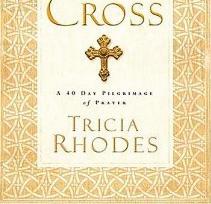



BAPTISM/MEMBERSHIP
Katie Coyle, Kiersten Friesen, Alyssa Friesen, Emily Enns, Ashley Toews, Abigail Eggleston and Libby Rogers were baptized and received as members Dec. 12 at Shafter (Calif.) MB Church. Wanda Connoley, Kay West, Heidi Wilson and Leanne Wohl were also received as members.
Ashlyn Keeling, Sierra Yoder and Kaylee Parkhurst were baptized Nov. 21 at Pine Acres Church, Weatherford, Okla
Candice Islas, Angela Mejorado, Jasmine Mejorado and Malorie Vera were baptized and received as members Nov. 7 at Dinuba (Calif.) MB Church
Loretta Mimms was baptized Nov. 28 at North Fresno MB Church, Fresno, Calif Tag Schmidt and Taylor Redding were baptized Nov. 21 at Hesston (Kan.) MB Church
Fifteen people were baptized the weekend of Nov. 20-21 at Laurelglen Bible Church, Bakersfield, Calif.: Asa Stuart Gray, Nicolas Jordan, Richard Njoroge Gathenji, Catherine Wambui Njoroge, Ndungu Bradley Peter Njoroge, Gathenji Brian Njoroge, Karura Brianna Hope Njoroge, Jordon Scott, Nina You-Ying Ha, Radu Hanganu, Ray Marquez III, Chad Spalinger, Paige Spalinger, Tyler Spalinger and Ashley Lynne-Anne Weaver.
Jonathan Blom, Julie Loewen, Jessica Hofer, Amanda Callies and Marilyn Sheffield were baptized Nov. 14 at Bethesda MB Church, Huron, SD. Hjalmer and Janet Tschetter, Robert and Jen Ries, Nick and Tasha Roth, Brad and Amanda Callies, Jessica Hofer, Julie Loewen and Jonathan Blom were received as members Nov. 28.
Samantha Bacon, Casandra Cano, Sabrina Elenes, Montgomery Wilker, Jason Schellenberg, James Sorensen, Leslie Miller and Karl Nippoldt were baptized Nov. 14 at Reedley (Calif.) MB Church. Brian Neufeld, Katherine Neufeld and Greg Essman were received as members.
Shane Dustman, Clayton Hartog, Cheryl Haggerty, Timothy Haggerty, Cameron Jasgur, Christian Lucero and Summer Milton were baptized Nov. 14 at South Mountain Community Church, Draper, Utah
Brandon Boit, Rachel Poston, Riley Winter and Zeb Ahrendt were baptized Nov. 14 at Bible Fellowship Church, Rapid City, SD
Larry Neuschafer Sr. and Tim Nation were baptized and received as members of Valleyview Bible Church, Cimarron, Kan.,
Nov. 21. Joetta Neuschafer and Bryan and Jamie Duncan were also received as members.
Taylor Neufeld was baptized and received as a member of College Community Church MB, Clovis, Calif., Nov. 14. Nathan and Rachel Boldt, Cesar and Sandra Baez Garcia and Jennifer Janzen were also received as members.
WORKERS
Luke Froese has resigned as youth pastor of Zoar MB Church, Inman, KS.
Bruce Porter has resigned as lead pastor of Buhler (Kan.) MB Church and accepted a position as lead pastor at Lincoln Glen MB Church, San Jose, Calif. He and his wife, Janice, ended their ministry in Buhler at the end of January.
Heidi Schmidt was commissioned for missionary service to Portugal Oct. 31 at Enid (Okla.) MB Church.
Craig Jost, MBMS International missionary to France, was ordained Nov. 14 at First MB Church, Wichita, Kan.
DEATHS
Bergman, Lowell Eugene, 79, Shafter, Calif., member of Shafter MB Church, died Nov. 14, 2010. Spouse: Betty Bergman. Parents: Henry and Mary Bergman. Children: Lucy, Gordon; 10 grandchildren; five great-grandchildren.
Koop, Ella Mae Reimer, 81, Corn, Okla., member of Corn MB Church, died Dec. 13, 2010. Spouse: Clarence Koop. Parents: Herman and Anna Reimer. Children: Ernie, Loren, Anita Fransen; six grandchildren; one great-grandchild.
Nachtigall, Melba Friesen, 93, Fresno, Calif., 93, died Dec. 15, 2010. Children: Judy Brescia, Dale, Paul and Bruce; 8 grandchildren, 11 great-grandchildren.
Schmidt, Ruth, 95, Corn, Okla., of Corn MB Church, died Dec. 16, 2010. Spouse: Ted Schmidt, deceased. Parents: Henry and Margaret (Sitzman) Traudt. Children: Geral, Loretta Schmidt, Barbara Goodman; seven grandchildren; 16 great-grandchildren.
Wall, Frieda, 88, Hillsboro, Kan., member of Hillsboro MB Church, died Nov. 5, 2010. Spouse: Elmer Wall, deceased. Parents: Emil and Martha (Duerksen) Bartel. Children: Robert, Sandra Garrard; seven grandchildren; four great-grandchildren.
Wiebe, Raymond Duane, 78, Reedley, Calif., former MB pastor, died Sept. 28, 2010. Spouse: Gladys Balzer. Parents: Bernard

Loving through laundry
One small group at The Bridge Bible Church, Bakersfield, Calif., is using laundry as a way to bless their community. They call it “Laundry of Love.” Once a month, the group goes to a coin-operated laundry in a lower income part of town and provides change and detergent for those who come to do their laundry. The volunteers also offer muffins and coffee, a small bag of groceries and a taste of Christ’s love. The idea came from JustOne, a nonprofit dedicated to raising awareness and resourcing others to relieve poverty (www.Just4One.org).
Kids win at Bethany MB
At Bethany MB Church, Fresno, Calif., basketball season means kids win, and kids learn that winning isn’t everything. Bethany cooperates with neighboring Woodward Park Baptist Church to host a basketball league through Upward Sports. While some sports leagues emphasize winning at all costs and put strain upon family time, Upward focuses on healthy competition, skills building and fun. Life lessons, Bible memory and regular devotions are part of the game. Bethany has opened their gym for Upward basketball since 2006. Nearly 250 children participated last year, with a significant portion coming from the community. For more on Upward, see www.upward.org.
New shoes a new experience
Some 626 children at Houston Elementary, Visalia, Calif., received new shoes Dec. 8 through the efforts of Fresno Pacific University (FPU), the Mennonite Brethren school on the West Coast; Neighborhood Church, an MB congregation in Visalia; and KDUV Christian radio.
“Soled Out for Kids” was inspired by FPU’s annual business forum Oct. 27, which featured Blake Mycoskie, founder of TOMS Shoes. TOMS gives one pair of shoesto a needy child for every pair sold.
Neighborhood Church was invited to be part of the project because they have an ongoing partnership with Houston Elementary, a school in a highpoverty neighborhood. FPU and KDUV spearheaded and funded the project; Neighborhood provided about 30 volunteers. About six weeks before the “shoe drop,” volunteers traced the feet of every child at Houston in order to get correct sizes, and then they helped on delivery day.
For many Houston students, it was the first time they had chosen a new pair of shoes.
Stephanie Bartsch, missional strategist at Neighborhood, points out that it was a small demonstration of grace—a gift undeserved, unearned and offered to all.
Links to local coverage are available at CL Online.

and Frena Wiebe. Children: Jeffrey, Judy Johnson, Jim, Jeanette Stambach; five grandchildren.
Willems, Lee, 90, Fresno, Calif., of Bethany MB Church, Fresno, died Nov. 28, 2010. Spouse: Tillie. Children: Ron, Ken, Dan, Curt; eight grandchildren; 30 great-grandchildren.
reaching in DISCIPLESHIP
On Jan. 9, Christ Community Church, Sioux Falls, SD, honored those who read through the Bible in 2010.
Two workshops Nov. 6 at Community Bible Church, Olathe, Kan., focused on children’s ministry: “Developmental play and worship” and “Get Real: Move kids from information to transformation.”
An adult Sunday school class at North Fresno MB Church, Fresno, Calif., focused on the principles of Advent Conspiracy— worship fully, spend less, give more, love all—before Christmas. A seminar on moral purity for men was offered Nov. 6.
Parents were invited to a seminar on “Sex, Porn and Intimacy” Nov. 7 at Hesston (Kan.) MB Church. The purpose of the seminar was to discuss ways to shape the thinking of children on relationships.
A reading contest called “Read S’More Books” encourages children at Bethesda Church, Huron, SD, to read missions books.
A new small group called “Men of Integrity” is meeting weekly at Bible Fellowship Church, Minot, ND
Youth at Neighborhood Church, Visalia, Calif., raised funds for the upcoming National Youth Convention with the “200 Challenge.” Church attendees were invited to fill envelopes, numbered from one to 200, with the dollar amount corresponding to the envelope number. If all the envelopes were to be filled, the youth would raise $20,000.
High school girls at Laurelglen Bible Church, Bakersfield, Calif., participate in a cooking class every other Monday evening.
Iglesia Vida Nueva, Bakersfield, Calif., a Spanish-language congregation, is offering Tuesday evening classes in conversational Spanish for English speakers.
Reedley (Calif.) MB Church offers “discipleship notebooks” as a place to keep sermon notes, church materials and prayer plans.
Koerner Heights Church, Newton, Kan., has begun a new Wednesday evening min-
istry especially for fifth and sixth graders. The ministry is designed to meet the unique needs of this age group and be a bridge between Wednesday evening children’s ministry and junior high youth ministry.
FELLOWSHIP
Men from South Mountain Community Church, Draper, Utah, who attended a winter retreat Jan. 28 learned about “The Six Basics of Being a Great Dad.”
Families from Birch Bay Bible Community Church, Blaine, Wash., saw the Narnia movie Voyage of the Dawn Treader at a local theater for a family movie night Dec. 29.
College students at First MB Church, Wichita, Kan., wore “ugly Christmas sweaters” to a gathering Dec. 29.
An all-church bunko night was held Jan. 8 at Valleyview Bible Church, Cimarron, Kan.
Attendees of College Community Church, Clovis, Calif., spent time enjoying the music of Christmas with “Carol Jam” Dec. 26.
Laurelglen Bible Church, Bakersfield, Calif., has launched a new ministry for mothers of young children who work or otherwise cannot attend a morning Mothers Of Preschoolers (MOPS) meeting. The ministry is called MOPS PM.
Women from Zoar MB Church, Inman, Kan., were encouraged to wear clothes that clash to a pizza-and-bunko night Nov. 15. A prize was awarded to the woman who wore clothes that clashed the most.
Men from Heritage Bible Church, Bakersfield, Calif., will go on a ski retreat Feb. 25-27.
Attendees of Copper Hills Church, Glendale, Ariz., played flag football Dec. 4.
Youth at Salem MB Church, Freeman, SD, organized an evening of caroling Dec. 19, followed by a soup supper.
Women at Henderson (Neb.) MB Church planned a retreat Jan. 28-29, featuring a DVD series by Beth Moore, “Loving Well.”
Men from Ebenfeld MB church, Hillsboro, Kan., gathered to watch football Nov. 14.
The theme for the women’s Christmas event at Laurelglen Bible Church, Bakersfield, Calif., was “Home for the Holidays,” with a speaker emphasizing the eternal home that Jesus offers. Men played football on Thanksgiving for the “Turkey Bowl.”
Cornerstone Community Church, Topeka, Kan., is hosting a free women’s retreat Feb. 18-19 that is open to the public.
A hip-hop group, Flame On Gospel, presented a concert for youth Nov. 7 at the Souled Out Center, the youth ministry of Bethesda MB Church, Huron, SD
A team from First MB Church, Wichita, Kan., is now participating in a weekly bowling league.
WORSHIP
A sermon series on the Sermon on the Mount at North Fresno MB Church, Fresno, Calif., ended Dec. 5 with a dramatization of the passage.
This year’s children’s Christmas program at College Community Church MB, Clovis, Calif., was titled, “A Refugee’s Christmas.” Attendees were asked to bring warm socks, mittens, hats and scarves, which were donated to a local organization that works with modern-day refugees.
reaching out
LOCALLY
A team of men from Buhler (Kan.) MB Church, called “Wired for Work,” are available to help those who cannot do their own maintenance and household repairs. North Park Community Church, Eugene, Ore., hosted a neighborhood association meeting Jan. 13.
Donations from First MB Church, Wichita, Kan., helped provide nearly 250 turkey dinners for families in need in the city. Volunteers joined members of Lighthouse
Local Church:
Community Church, Wichita, Kan. to distribute the dinners Dec. 5.
In lieu of a Christmas Eve service, families from Trailhead Church, Centennial, Colo., spent the evening Dec. 24 caroling at a local nursing home.
Enid (Okla.) MB Church organized a oneday basketball camp at a local elementary school Nov. 20 for third through sixth graders. Mark Thompson, short-term mission coordinator for MBMS International, and two young men from a basketball mission team to Thailand served as resource people. The event was based on camps used by MBMSI in various locations throughout the world to build bridges with people in the community. Thompson then served as a guest speaker for a mission emphasis Nov. 21.
About 70 men from The Bridge Bible Church, Bakersfield, Calif., participated in a local parade Dec. 2 with a “Men of God” float. Wearing Santa hats, they sang worship and Christmas songs and greeted those along the parade route with “Merry Christmas.”
Cornerstone Community Church, Topeka, Kan., is hosting a benefit concert and dessert Feb. 26. Proceeds will help defray therapy expenses for an autistic child in the congregation.
Volunteers at Koerner Heights Church, Newton, Kan., packed and distributed 1,000 Christmas gift bags with New Testaments, tracts and invitations Dec. 11.
CLEARINGHOUSE
Youth Pastor: Buhler (Kan.) MB Church is looking for someone who loves God, loves students and desires to lead a balanced ministry of discipleship, outreach and mission with junior and senior high students. For more information about our church and applying for this position, e-mail resume and inquiry to bporter@buhlermb.org or go to our website at buhlermbchurch.org
CALENDAR
Concert:
Ebenfeld MB Church, Hillsboro, Kan., contributed 75 Thanksgiving food baskets to a local ministry that helps the needy.
Volunteers from Community Bible Church, Olathe, Kan., have formed a “snow brigade” to help elderly and disabled in their community with snow removal during the winter.
In November, women at Shafter (Calif.) MB Church organized a grocery shower for students of the Mennonite Brethren seminary in Fresno, Calif.
Neighborhood Church, Visalia, Calif., reached out to families at their local elementary school through a Christmas project called “Christmas with Dignity Store,” which enabled parents to purchase gifts for their children at drastic discounts.
A new welcome team at Buhler (Kan.) MB Church puts together welcome baskets, filled with goodies and community information, and gives the baskets to those new in town.
The worship team from Belleview Community Church, Littleton, Colo., leads the service at the local rescue mission once a month.
GLOBALLY
Volunteers from Templo De Oracion, Templo, Calif., made and delivered chile verde dinners Nov. 14 to Dinuba (Calif.) MB Church. Proceeds from the fundraiser went to help an orphanage in Baja California, Mexico.
West Coast Mennonite Men’s Chorus in concert April 3 at Laurelglen Bible Church, Bakersfield, Calif., 5 p.m.; April 10 at Clovis Hills Community Church, Clovis, Calif., 5 p.m.; April 17 at Grace Bible Church, Arroya Grande, Calif., 4 p.m. and May 15 at Calvary Chapel, Visalia, Calif., 6 p.m. Proceeds from offerings will benefit Mennonite Central Committee.
n March 7-9, 2011 National Pastors’ Orientation, San Diego, Calif.
n March 9-10, 2011 National Board of Faith and Life meeting, San Diego, Calif.
n March10-11, 2011 Leadership Summit, San Diego, Calif.
n March 11-13, 2011 Leadership Board meeting, San Diego, Calif.
n April 16-19, 2011 National Youth Convention, San Antonio, Texas
n June 13-17, 2011 ICOMB Global Higher Education Consultation, Winnipeg, Man.
n June 18-20, 2011 International Community of Mennonite Brethren annual meeting, Winnipeg, Man.
n July 25-28, 2012 Conection 2012, Omaha, Neb.

























Mennonite Brethren Loan Fund offers Investment Certificates for Individual Retirement Accounts (IRA)! You can assist MB churches through a Traditional, Roth, or SEP IRA investment. A partnership with GoldStar Trust Company allows the investor to set up an IRA with GoldStar and instruct them to invest in a MB Loan Fund investment certificate.
While you earn interest on your certificate, we are able to make loans to churches that are expanding their ministry. You too can be part of transforming lives!





At MB Foundation we make it our mission to encourage and assist you with Biblical financial stewardship solutions. We offer a growing variety of financial services including:
We encourage you to consider how MB Foundation might be able to assist you in Giving Meaning to YOUR
